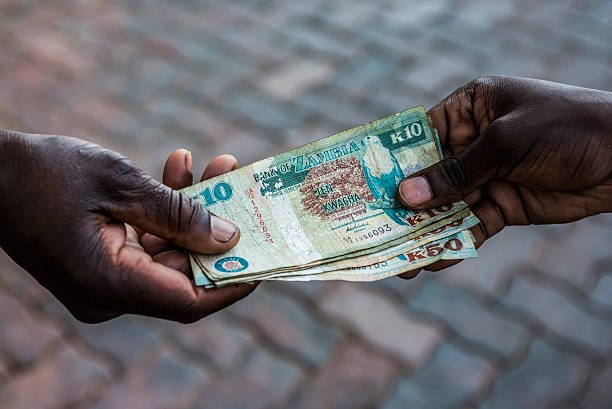• IMF Staff Level Agreement created international perspective that the country was good for investment.
• The depreciation is coming from normal macro-economic indicators.
• A lot of organizations are looking to bring in a lot of goods and services.
In December 2021, the country witnessed a positive performance of the Kwacha against major convertible currencies, such as the United States Dollar.
This was triggered by news about Zambia reaching a Staff level Agreement with International Monetary Fund (IMF), on the 3rd of December 2021, for a three-year program under the Extended Credit Facility for US$ 1.4 billion.
According to Financial Experts, the agreement boosted investor confidence into the country’s economy which was the local unit trading between K15 and K16 respectively.
Weeks later, the Kwacha has however gone back to its depreciation trend as it is now trading between Sixteen Kwacha Eighty Two Ngwee and Seventeen Kwacha Fifteen Ngwee per US dollar.
And Financial Analyst Trevor Hambayi said the IMF Staff Level Agreement created international perspective that the country was good for investment, therefore it became attractive for investors to come onto the market.
Mr. Hambayi told Money FM News in an interview that the current depreciation of the local currency is resulting from normal macro-economic indicators such as the persistent high US dollar demand against limited supply.
“The Key consideration is what we can attribute the exchange rate for the appreciation that we have had, and remember that appreciation came as a result of the country having secured an IMF Staff Level Agreement which created international perspective that the country was good for investment, so it became attractive for a number of investors to come on to the market and that is where the appreciation came from,” Mr. Hambayi said.
He said as 2022 kicks off, a number of organizations are looking to bring in a lot of goods and services to strategically position themselves for the New Year, thereby putting pressure on the Kwacha.
“The depreciation right now is coming from the normal macro-economic indicators which are coming to play, which are speaking to the demand on the market, and the fact that we have started a new year, a lot of organizations are looking to bring in a lot of goods and services to provide for the strategic positioning of 2022,” he added.
On Monday 6th December 2021, the Kwacha opened the trading session at K17.78/K17.83 and closed at K17.54/K17.59, 1.57 percent stronger than K17.82/K17.87 as of Friday 3rd December 2021.
As of Friday 10th December 2021, the local unit was trading at 15.90/16.21 against the USD.







